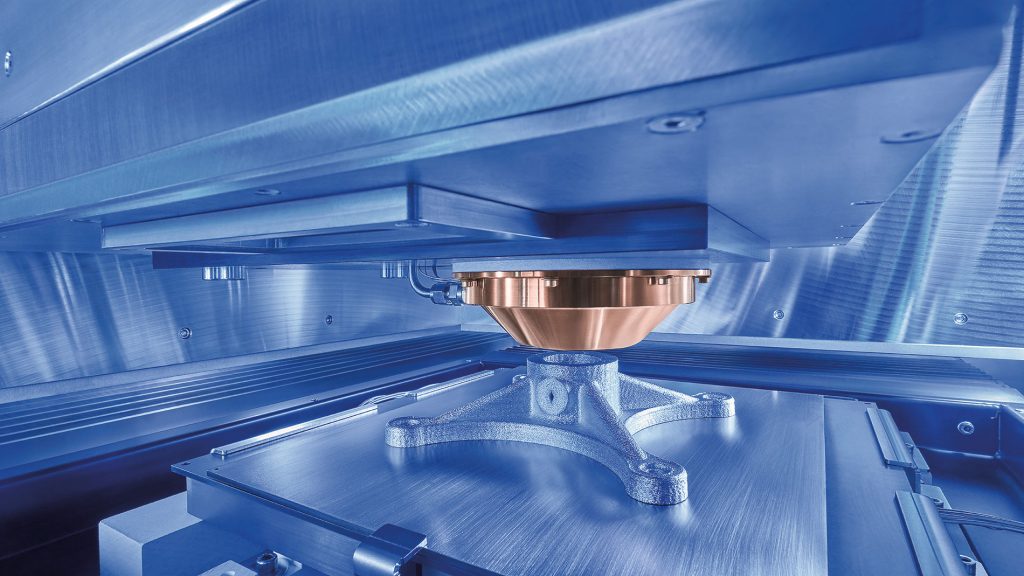With the GMP300, Grob is presenting its Liquid Metal Printing (LMP) for the production of near-net-shape components for the first time. According to the manufacturer, the machine offers reliable, efficient and cost-conscious system technology with maximum production flexibility for one-off and small batch production.
"GMP" stands for "Grob Metal Printing" and the 300 for the size of the working area 300 mm × 300 mm × 300 mm. The GMP300 is equipped with 3-axis kinematics and offers a maximum axis speed of 30 metres per minute. The inert atmosphere serves to protect the component from oxidation and thus guarantees consistently good material properties.
According to Grob, the company has developed LMP, a forward-looking, economical and at the same time flexible additive manufacturing process that eliminates the disadvantages of traditional, metalworking additive manufacturing processes, also against the backdrop of increasing market demands for customised and near-net-shape products.
In the LMP process developed by Grob, the starting material is wire. The LMP process produces a homogeneous microstructure with yield strengths that correspond to or in some cases exceed the values of the starting material. The droplet diameter can be adjusted between 380 and 700 micrometres by using different nozzles. In addition, the print head including nozzle can be changed quickly during the build-up process as well as the build plates between print jobs. With a maximum drop frequency of 500 hertz and a drop diameter of 700 micrometres, the build rate is up to 320 cubic centimetres per hour, according to Grob.
Compared to previous AM processes, Grob cites the higher build-up rate compared to PBF systems and better component resolution compared to current DED processes as advantages. Another advantage is the simpler operation. "The fact that powder handling is not necessary and that there are no beam sources of any kind means that the systems can be integrated into an existing production facility without increased safety precautions," says Dr.-Ing. Johannes Glasschröder, the team leader responsible for additive manufacturing at Grob.
www.formnext.com
